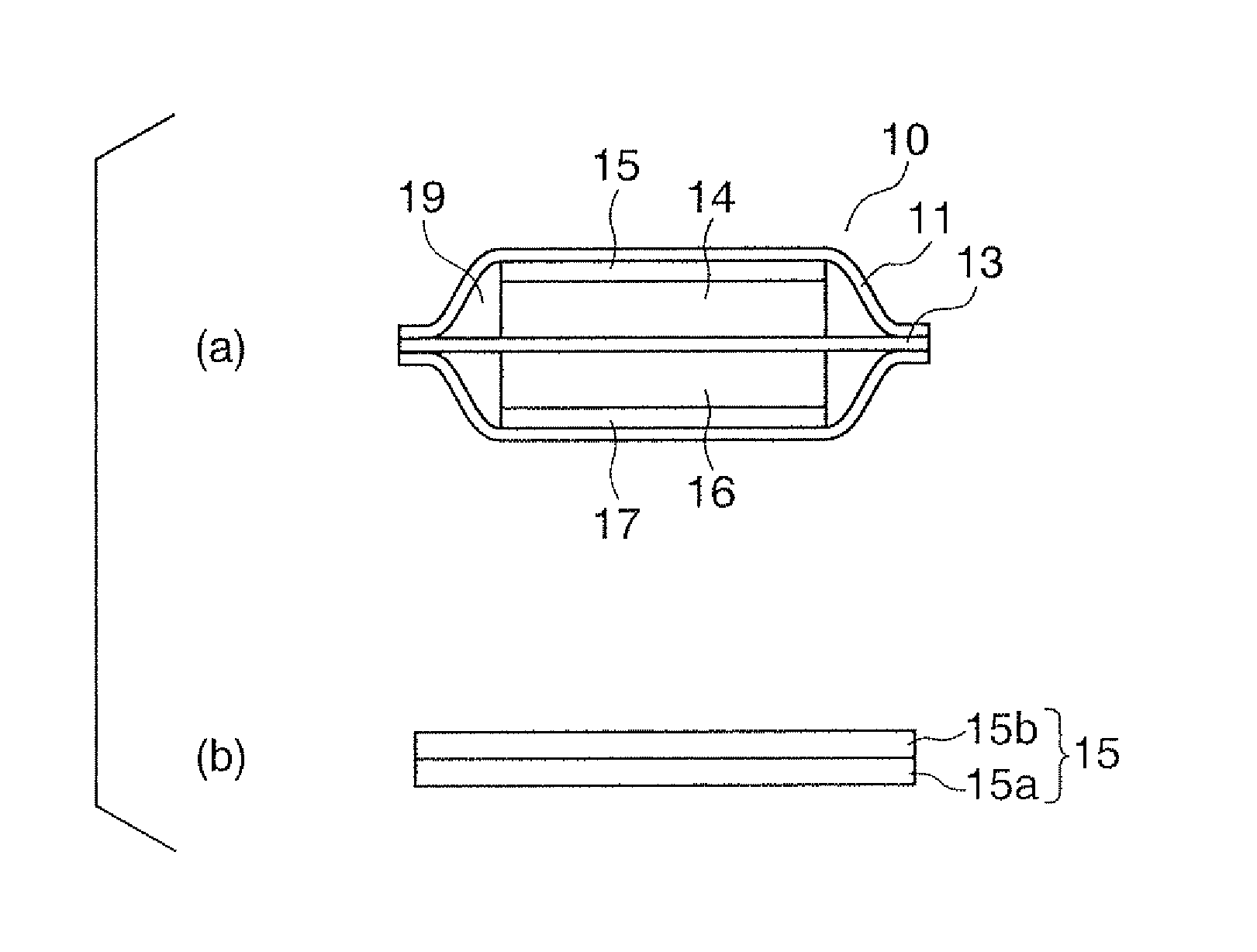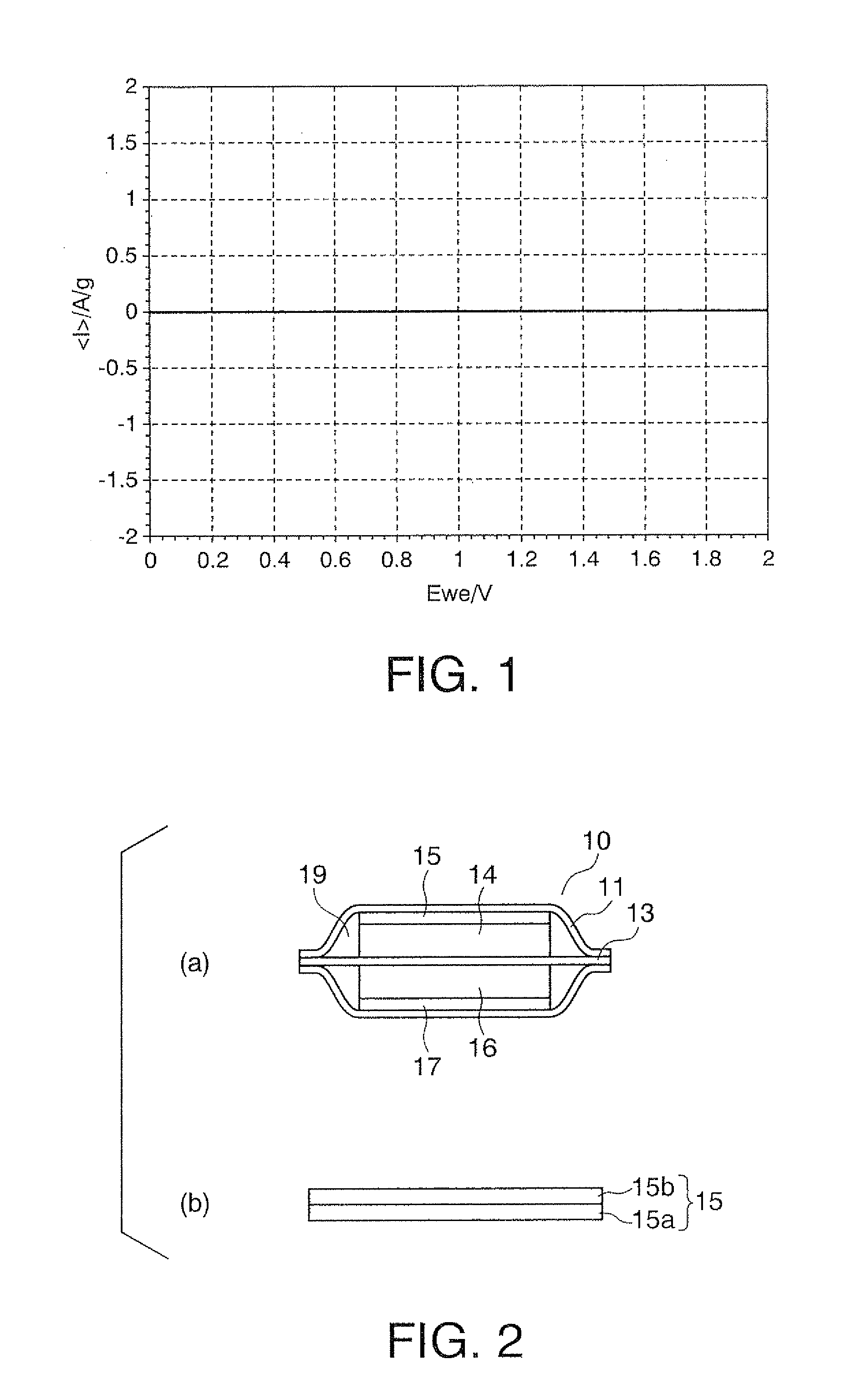Cathode plate for non-aqueous electrolyte secondary battery, method for producing the same, and non-aqueous electrolyte secondary battery
a secondary battery and electrolyte technology, applied in the direction of electrochemical generators, cell components, transportation and packaging, etc., can solve the problems of reducing the contact area between the electrolyte and the active material, unable to make the best use of the capacity of the high-output discharge and high-rate charge, and high-impedance batteries. achieve the effect of high discharge rate characteristics, high output and input characteristics, and easy production
- Summary
- Abstract
- Description
- Claims
- Application Information
AI Technical Summary
Benefits of technology
Problems solved by technology
Method used
Image
Examples
example 1
[0092]Production of Cathode Plate:
[0093]A starting material for a metal oxide was prepared by adding 40 g of copper chloride to 40 g of methanol. To this mixture was added 20 g of synthetic graphite with a mean particle diameter of 20 μm as a cathode active material, and the mixture was kneaded with an Excel Auto-Homogenizer (manufactured by NIHONSEIKI Co., Ltd., Japan) at 8000 rpm for 15 minutes, thereby preparing a cathode active material layer-forming composition.
[0094]Next, the electrode active material layer-forming composition was applied to one surface of electrolytic copper film with a thickness of 10 μm, serving as a cathode current collector, with an applicator (2 mil), whereby a coating film was formed.
[0095]The cathode current collector having thereon the coating film was placed in an electric oven and was heated at a temperature of 250° C. for 1 hour, thereby forming an electrode active material layer with a thickness of 20 μM on the current collector. In this manner, a...
examples 2 to 9
[0113]Cathode plates were obtained in the same manner as in Example 1, provided that the metal salt, the cathode active material, the solvent, and the cathode current collector used in Example 1 were changed to those ones shown in Table 1, and were cut into pieces in the above predetermined size, whereby cathodes of Examples 2 to 9 were obtained. In Examples 2, 7 and 8, a conductive material shown in Table 1 was further added to the solvent, and the mixture was kneaded with a homogenizer. In any of Examples 1 to 9, a resinous binder was not used. The thicknesses of the electrode active material layers in the cathodes of Examples 1 to 9 are shown in Table 2.
[0114]With the use of the cathodes of Examples 2 to 9, three-electrode-beaker cells, test cells of Examples 2 to 9 (Test Cells 2 to 9), were assembled. These test cells were subjected to the above-described charge and discharge tests, and the percentages of discharge capacity retention were obtained by calculation. The results are...
PUM
| Property | Measurement | Unit |
|---|---|---|
| thickness | aaaaa | aaaaa |
| thickness | aaaaa | aaaaa |
| particle diameter | aaaaa | aaaaa |
Abstract
Description
Claims
Application Information
 Login to View More
Login to View More - R&D
- Intellectual Property
- Life Sciences
- Materials
- Tech Scout
- Unparalleled Data Quality
- Higher Quality Content
- 60% Fewer Hallucinations
Browse by: Latest US Patents, China's latest patents, Technical Efficacy Thesaurus, Application Domain, Technology Topic, Popular Technical Reports.
© 2025 PatSnap. All rights reserved.Legal|Privacy policy|Modern Slavery Act Transparency Statement|Sitemap|About US| Contact US: help@patsnap.com



